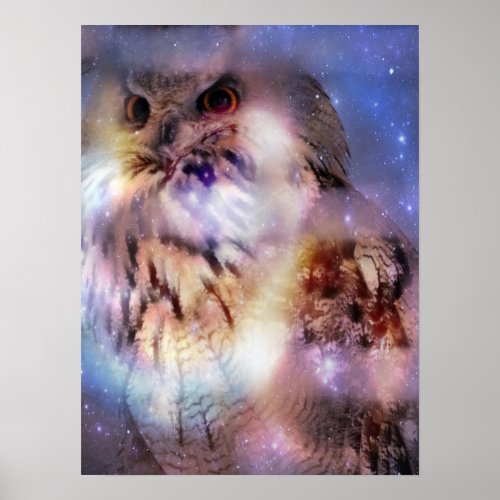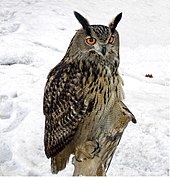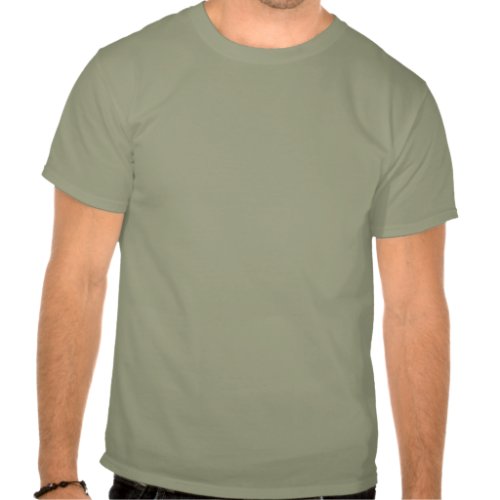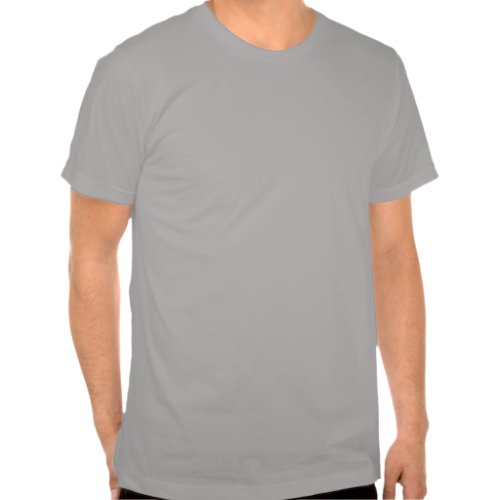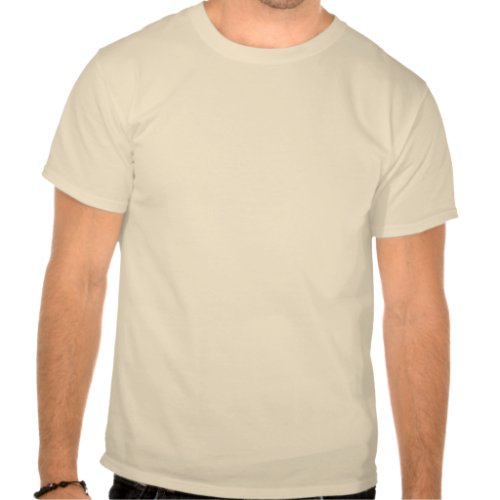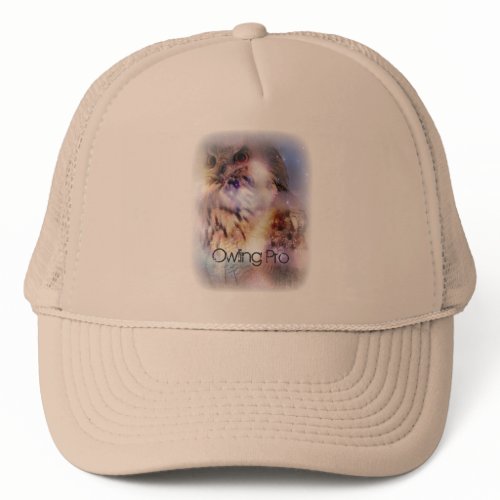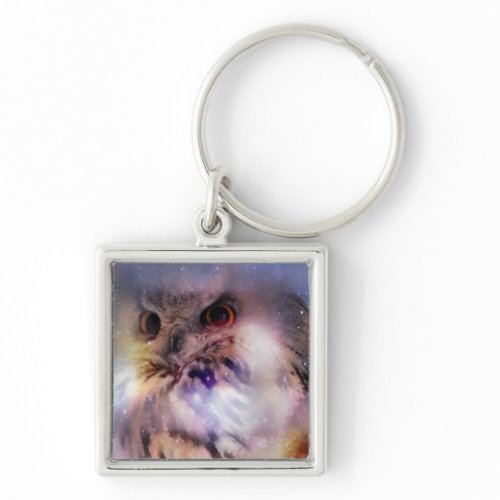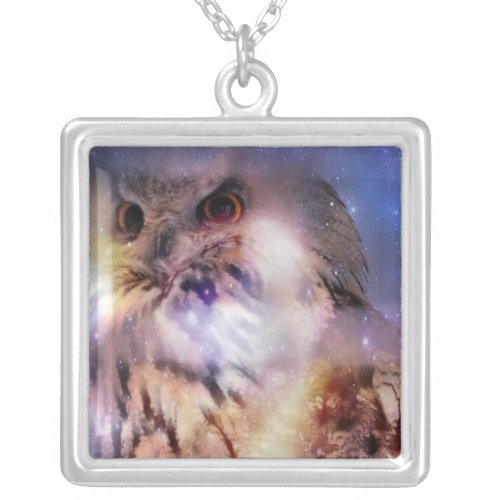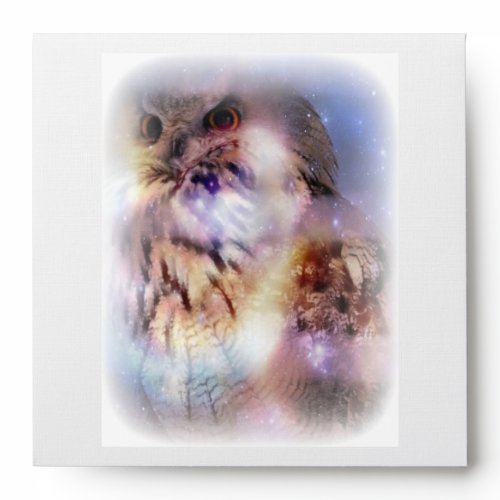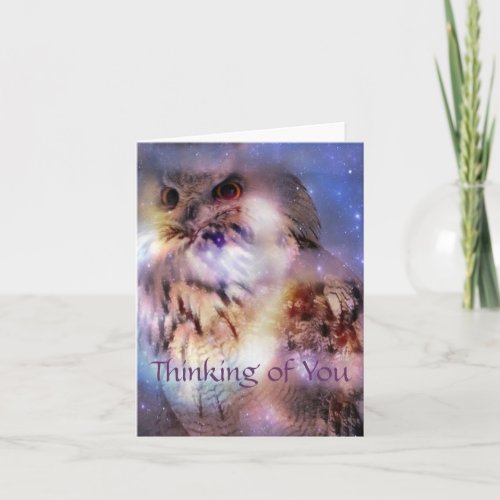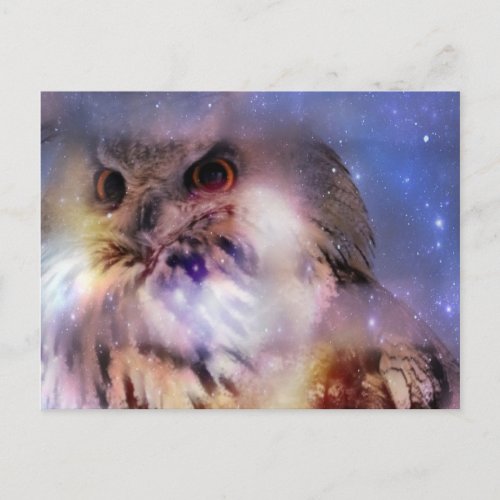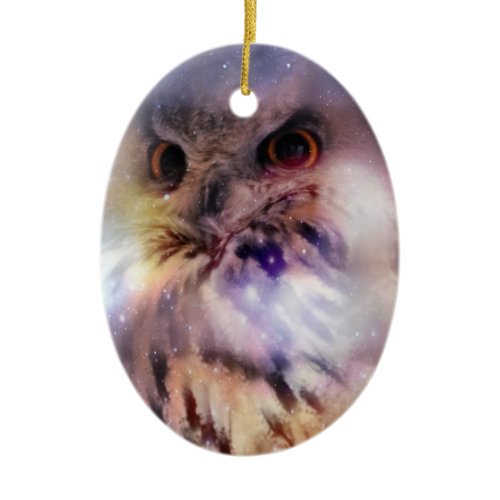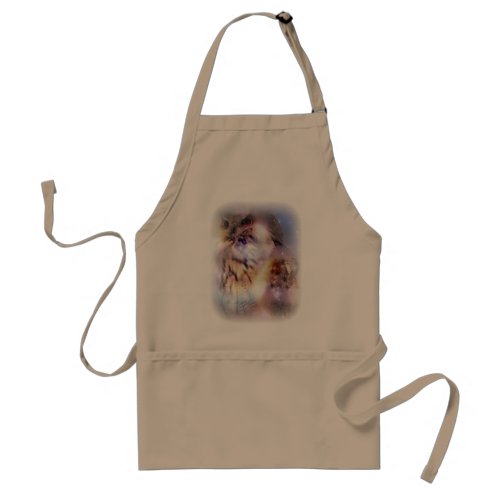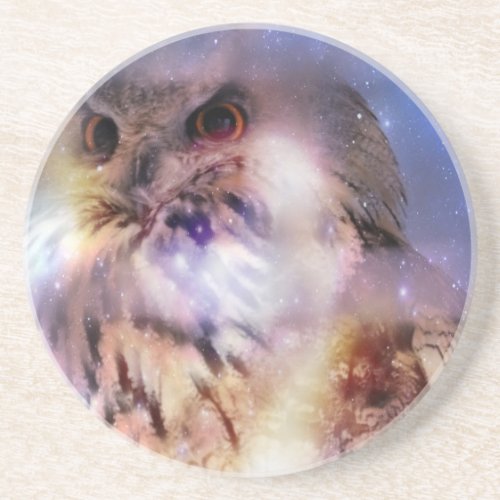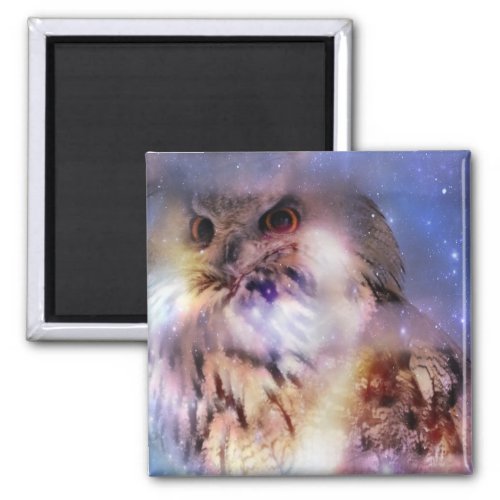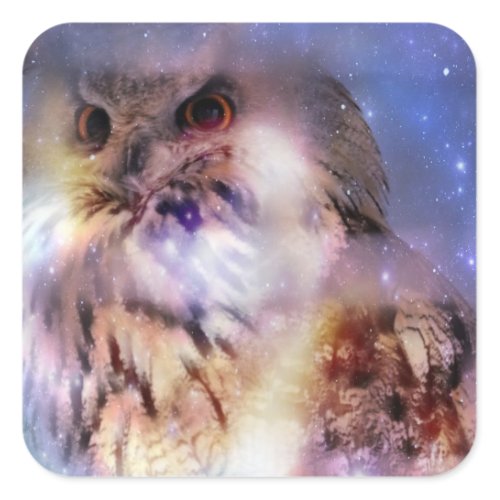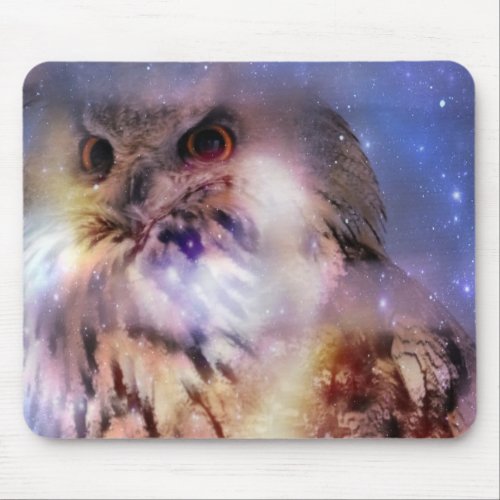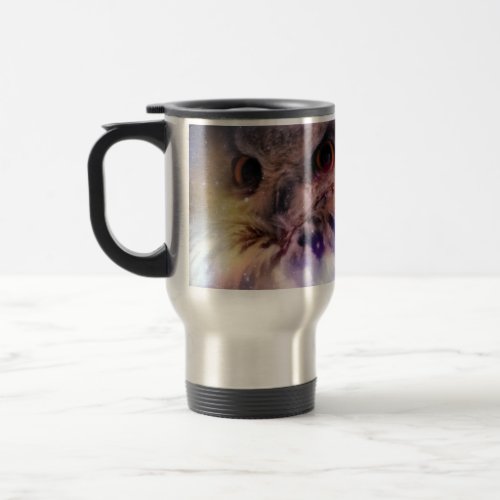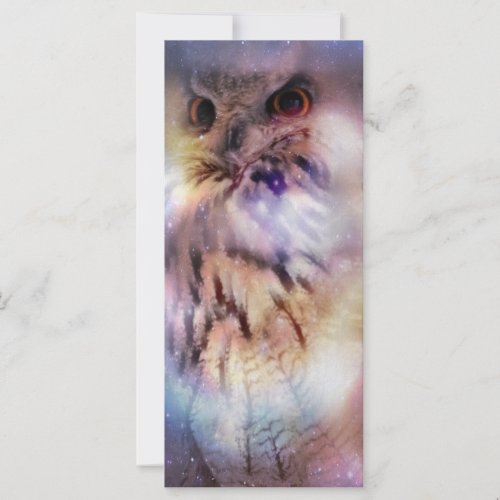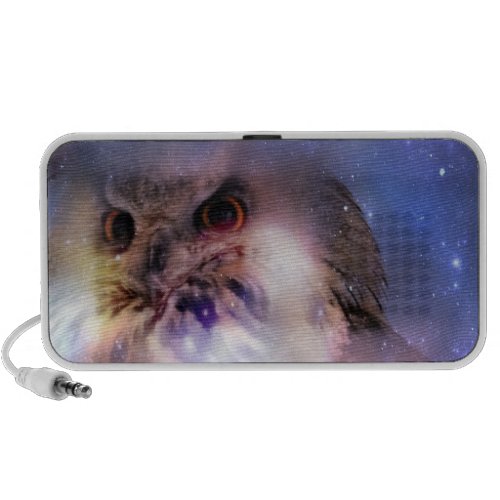The Eurasian Eagle-Owl (Bubo bubo) is a species of eagle owl resident in much of Europe and Asia. It is also one of the largest types of owls.
Browse other Owls Posters
Description
The Eagle Owl is a large and powerful bird, smaller than the Golden Eagle but larger than the Snowy Owl. It is sometimes referred to as the world's largest owl, but this is actually the Blakiston's Fish Owl, which is slightly bigger on average. The Eagle Owl has a wingspan of 138–200 cm (55–79 in) and measures 58–75 cm (23–30 in) long. Females weigh 1.75-4.5 kg (3.9-10 lbs) and males weigh 1.5-3.2 kg (3.3-7 lbs). In comparison, the Barn Owl weighs about 500 grams (1.1 lbs).Behaviour
Feeding
It mainly feeds on small mammals in the 200-2,000 gram (0.44-4.4 lb) weight range, such as voles, rats, mice and hares. However, prey can be killed up to the size of foxes, marmots and young deer (up to 17 kg/37 lb), if taken by surprise. The other significant group of prey is other birds and almost any type of bird is potential prey. Common avian prey include corvids, grouse,woodpeckers, other raptors and, especially near coastal areas, ducks, seabirds and geese. Larger prey (over 3 kg/7 lb) is consumed on the ground which leaves the bird vulnerable to loss of prey or even predation by predators such as foxes.
Breeding
The call of the Eagle Owl is a deep resonant “ooh-hu with emphasis on the first syllable for the male, and a more high-pitched uh-Hu for the female. Each member of an Eagle Owl population can be identified by means of its vocalizations.
This species has a strong direct flight, usually consisting of shallow wing beats and long, fast glides. It has, unusually for an owl, also been known to soar on updrafts. The latter method of flight has lead them to be mistaken for Buteos, which are smaller and quite differently-proportioned.
The Eagle Owl is largely nocturnal and is usually found nesting on cliff ledges. Laying generally begins in late winter, sometimes later. One clutch per year of 1-6 white eggs are laid, measuring 56-73mm x 44.2- 53mm (2.2- 2.9" x 1.7- 2.1") and weighing 75- 80g (2.6- 2.8 oz). They are normally laid at 3 days intervals and are incubated by the female alone, starting from the first egg, for 31–36 days. During this time, she is fed at the nest by her mate. Once hatched, the young are brooded for about 2 weeks; the female stays with them at the nest for 4–5 weeks. For the first 2–3 weeks the male brings food to the nest or deposits it nearby, and the female feeds small pieces the young. At 3 weeks the chicks start to feed themselves and begin to swallow smaller items whole. At 5 weeks the young walk around the nesting area, and at 52 days are able to fly a few metres. They may leave ground nests as early as 22–25 days old, while elevated nests are left at an age of 5–7 weeks. Fledged young are cared for by both parents for about 20–24 weeks. They become independent between September and November in Europe, and leave the parents' territory (or are driven out by them). At this time the male begins to sing again and inspect potential future nesting sites. Young reach maturity in the following year, but normally breed when 2–3 years old.
The Eagle Owl can live for 20 years in the wild although like many other bird species in captivity they can live much longer, perhaps up to 60 years. Adults have no natural predators are thus considered apex predators. Man-made causes are the leading cause of death for this species: electrocution, traffic accidents and shooting sometimes claim the eagle-owl.
Habitats
Eagle Owls are distributed sparsely through a wide range of habitats. They have been found in habitats as diverse as Northern coniferous forests to the edge of vast deserts. Rocky areas seem to be favored, with cliffs and mountains abutting woodland usually containing the largest numbers of these owls. Taiga, steppe and grasslands, may also be visited, largely while hunting in their large territories.
Farmland is sometimes inhabited and they even have been observed living in European cities. Since 2005, at least five couples have nested in Helsinki. The number is expected to increase due to the growth of the European rabbit population in Helsinki. (European rabbits have spread recently to the Helsinki area, originating from pet rabbits released to the wild. Hares, a prey of the Eagle owls in their natural habitat, live only in rural areas, not in the city centre.) In June 2007, an Eagle Owl nicknamed 'Bubi' landed in the crowded Helsinki Olympic Stadium during the European Football Championship qualification match between Finland and Belgium. The match was interrupted for six minutes. After tiring of the match, following Jonathan Johansson's opening goal for Finland, the bird left the scene. Finland's national football team have had the nickname Huuhkajat (Finnish forEurasian Eagle-Owls) ever since. The owl was named "Helsinki Citizen of the Year" in December 2007.
Source: wiki
Great Eagle-Owl Gifts
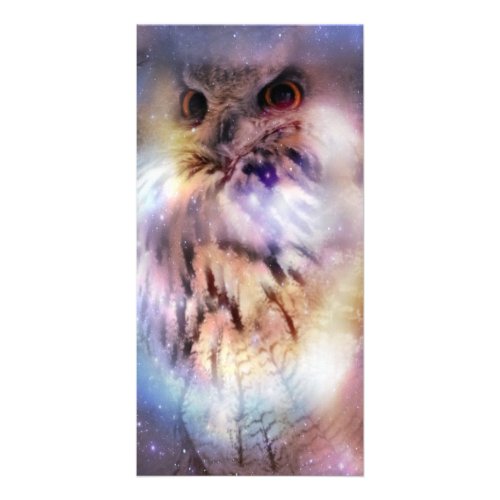
Eurasian Eagle-owl Photo Card by Sparklesofnow
Design a personalised photo greeting card using Zazzle

